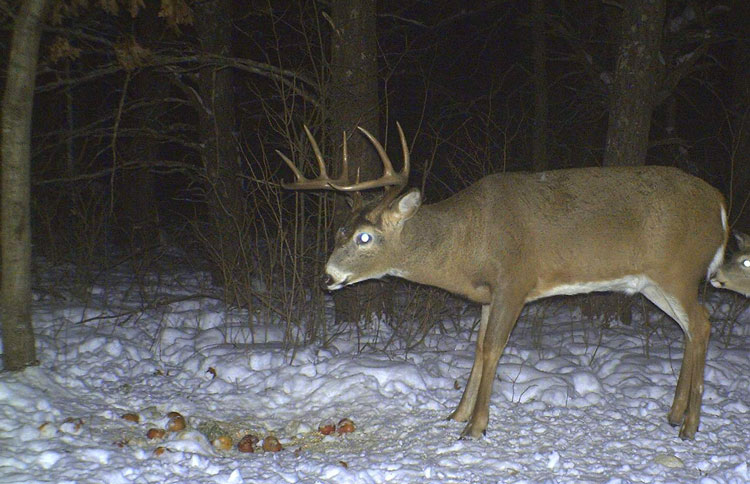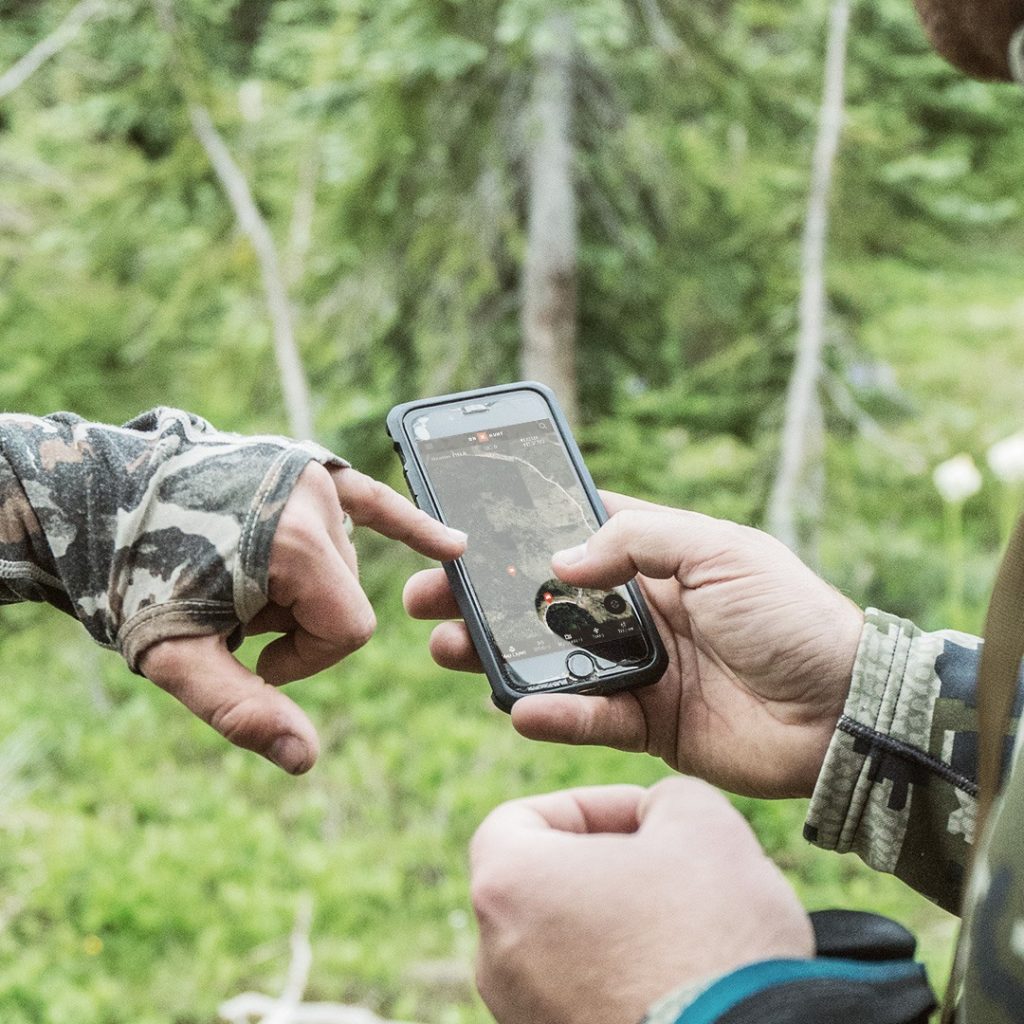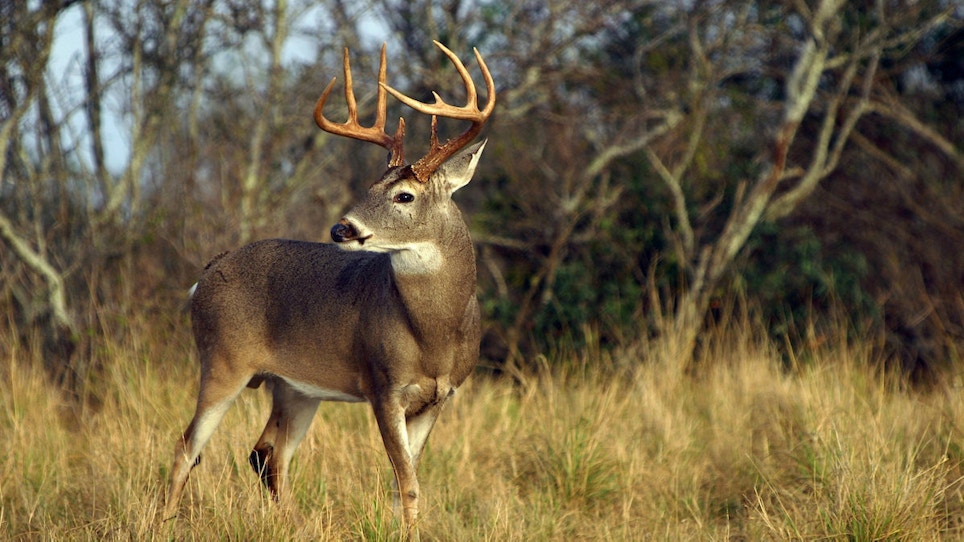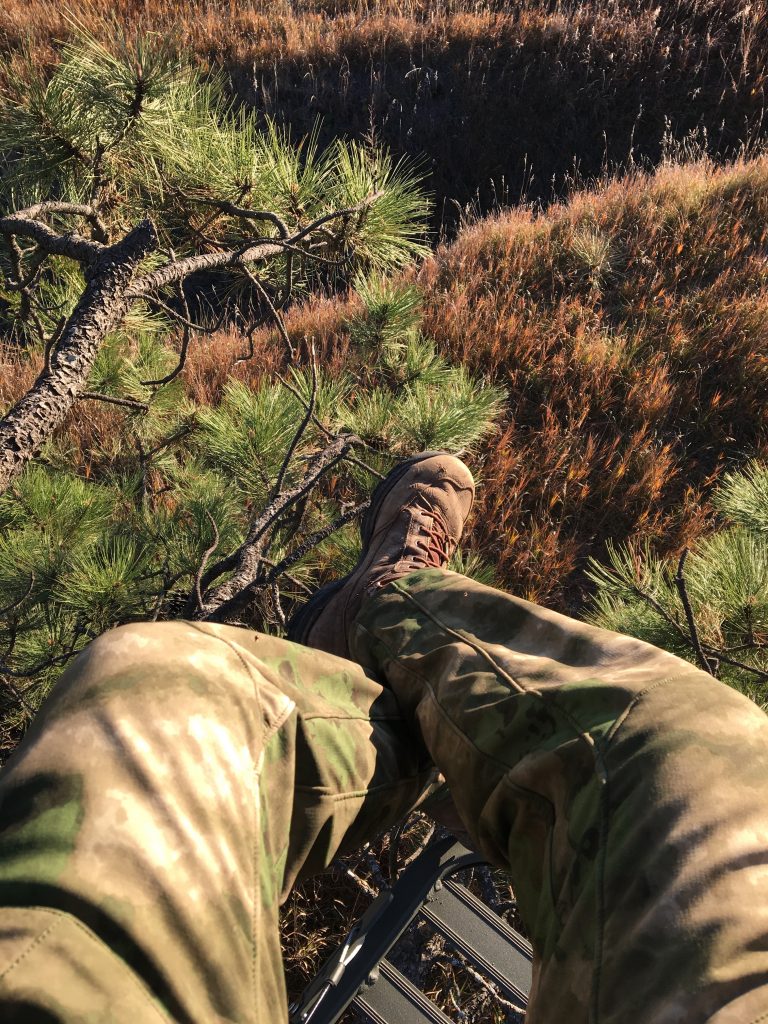I blamed it on my trail camera. Because of a little piece of modern technology and a memory card, every waking thought I had was consumed by the buck.
Unlike some hunters, I don’t really buy into giving the deer that I’m targeting catchy names like “The Ghost” or “Hercules.” So I referred to the wide 11-pointer as simply “The Buck.” My family knew which buck I was referring to, so it wasn’t necessary to give it a better moniker. Even my 5-year-old son caught on, calling it “da buck.”
One afternoon while driving home from work, I spotted the buck in a large soybean field. Although it walked with a slight limp, it was clear by how other deer behaved around it that da buck was da boss. Its gait reminded me of how NFL Hall of Famer Deion Sanders walks — although he has a small hitch in his giddy-up, he struts with confidence and purpose.
After hunting the buck for four straight days during the pre-rut, my hope of bagging it was dwindling fast. I never did see the buck during daylight hours again, and I spent most of my time in the field wondering if I’d overhunted my best stand and chased the deer off.
A Study on Hunting Pressure and Deer Behavior
All deer hunters know that whitetails can sense hunting pressure and will alter their behavior to survive. For example, the buck you saw on opening day suddenly becomes nocturnal.

Not surprisingly, use of bait sites during daylight hours decreased as the hunting season progressed.
The age-old question that continues to baffle most hunters is, how much hunting pressure is too much? In other words, how much is enough to make deer change where they go and when? In a recent study of South Carolina bucks, former grad student Clint McCoy sought to answer this question. What he learned will probably knock your camo-colored socks off.
While attending Auburn University, Clint McCoy captured and placed tracking collars on 37 bucks living in the Brosnan Forest of South Carolina (Dorchester). McCoy used portable GPS technology to monitor bucks that ranged in ages from 1 ½ to 4 ½ years old. The equipment enabled McCoy to determine where each buck was every 30 minutes. All bucks were tracked for three months from August through November, with the rut occurring from late September through early October.
McCoy studied buck movements on 6,400 acres north of U.S. 78, owned by Norfolk Southern Railway. Two-thirds of the property is in longleaf pine stands, with swamps and oak stands dispersed throughout the area. There are more than 100 food plots planted on about 300 acres of the property. More than 60 feeders also are used to draw deer into shooting range. Deer hunting season began on Sept. 15 and ran throughout the study period.
Hunter's Movements, A Buck's Home Range and the Cover of Night
To understand how much hunting pressure was placed on these deer, it’s important to know how hunters got around the area. All-terrain vehicles were used to transport hunters to and from stands, so there was minimal intrusion. The hunters’ level of experience ranged considerably. While some were relatively new to deer hunting, others were dyed-in-the-wool deer hunters.
After studying thousands of data points, McCoy first determined each buck’s home range, or where it spent 90 percent of its time. The average home range was just 350 acres, demonstrating that when bucks have good cover and enough to eat, they don’t travel far. An interesting finding was that the age of the buck did not predict the size of its home range.
“One yearling maintained a home range of just 60 acres, while another had a home range of 754 acres,” explained McCoy, now a biologist for the Ohio Department of Natural Resources.
Like many other studies of buck movements, McCoy’s research found that some bucks shifted their home range throughout autumn, maintaining two separate residencies at different periods in the fall. For example, one 4½-year-old buck would head to a soybean field located on adjacent property to the north. The buck would stay for a week and then return to its original home range. Now you might be thinking that, to bag the buck, just put a stand on the edge of the property next to the bean field. But that wouldn’t work on this deer.
“Even setting up a stand 100 yards south of the field would not have yielded a single sighting of the buck, because it only traveled in the dark,” added McCoy.
Measuring the Pressure
More than 100 stands are spread throughout the property. For each one, McCoy designated a visual danger zone of 100-150 yards around it, meaning bucks that moved into the danger zone put themselves at risk of being harvested. At any one time hunters occupied 20 to 30 different stands. Each hunter was dropped off at their stand before dawn, stayed until lunch, and then returned to their stand in the afternoon
Bucks Avoid the "Danger Zone" When ...
By the end of the study, McCoy found that each adult (2½ years of age and older) buck’s location averaged 55 yards farther from stands than at the beginning of the study period, demonstrating that adult bucks adjusted their movements in response to hunting pressure. Yearling bucks did not move farther away from stands as the season progressed. McCoy noted that yearlings were protected from hunter harvest, so they didn’t need to move farther from stands as the season progressed.
If a buck stayed out of the danger zone of a stand, McCoy surmised the deer was responding to hunting pressure. He was surprised to learn how quickly bucks would react to the presence of hunters.
“After a hunter had sat in a stand just one time, bucks would stay out of the danger zone of that stand for the next three full days, meaning they wouldn’t return, on average, until the fourth day,” explained McCoy. “This finding held regardless of whether the hunter had shot at a deer. Just occupying the stand made bucks stay clear of it for several days.”
Don't Sell a Young Buck Short. He's Stealthy Too.
Another interesting finding was that the age of each buck did not affect the likelihood of it staying clear of danger zones. In other words, younger deer weren’t more likely to move through danger zones than older bucks, dispelling the long-held assumption that mature bucks are more intelligent than younger bucks.
Use of Bait Sites in Daylight Declines Throughout the Season
Not surprisingly, use of bait sites during daylight hours decreased as the hunting season progressed. At the beginning of the season, half of all visits to bait sites occurred during shooting hours. By the end of the season, only one in four visits were made during daylight hours.
The 15-Hour Rule (It's a Crummy Rule)
Like McCoy, wildlife management consultant Bryan Kinkel has examined the effects of hunting pressure on bucks. To do this, Kinkel has Tennessee hunters record their stand location, when and for how long they hunted, and deer they observed. Similar to McCoy’s findings, Kinkel has found that after a stand has been occupied for just 15 hours, the odds of a hunter seeing a mature buck (3½ years old and over) drop to zero. Kinkel attributes this to the buildup of hunter scent over time.
“Even when the wind is in your favor, you’re still leaving your scent behind after you leave the woods,” explained Kinkel. “Over time your scent builds up, so even though you’re no longer hunting, deer can still smell that you’ve been in the area for days.”
Hunting Strategies
What can the average hunter do with all this information? The obvious answer is to not overhunt your best stands. But should you nearly stay out of the woods completely? Many hunters only have a week to hunt, so this isn’t a viable option.

Map your property and identify the de facto sanctuaries, which are safe, unpressured areas hunters have unintentionally created for deer. Photo: OnX Hunt (Facebook)
Kinkel recommends getting a map of your property and note all your stand locations and how much hunting time each stand experienced. After the season, look for areas where deer haven’t been pressured and set a stand there next year.
“I call these areas de facto sanctuaries, because hunters have unintentionally created safe areas for deer,” added Kinkel. “The areas exist because, for whatever reason, hunters don’t want to sit there. It might be a small thicket that’s near a house or an area that’s difficult to get to. But put a stand there next year, and chances are you’ll find it’s a buck hotspot.”
Kinkel has found that about 80 percent of mature bucks killed on properties he manages are taken from de facto sanctuaries. It sounds simple, but one of the best ways to prevent deer from reacting to the hunting pressure is to hunt areas that most hunters avoid. Whether it’s a little swale next to a highway or a small patch of tall grass and bushes, monster bucks hang out in the most unlikely spots. Hunt them and you’ll prevent deer from figuring out your hunting strategy.
Another way to keep stands fresh is to do what wildlife consultant Neil Dougherty calls “hunting by contamination.” I’ll let him explain.
“Before the season begins, set up two or three stands 100 to 150 yards downwind of your primary stand,” explained Dougherty (www.northcountrywhitetails.com). “After sitting in your first stand once or twice, move to the next stand. Pay close attention to what deer you see. When you notice a sudden decline in the number of deer you see, particularly adult deer, you know it’s time to move to the next stand.”
While it’s impossible to keep deer from knowing they’re being hunted 100 percent of the time, there are other things you can do to minimize hunting pressure on deer. Wear scent-control clothing and hose down the inside and outside of your stand with scent-killing spray before you leave the woods. Travel to and from each blind with the wind in your favor, and stay out of areas where deer travel frequently. These things won’t fool all deer all the time. But they will keep some deer in the dark, which will enable you to put some wall-hangers above your mantle.
Featured Image: John Hafner







